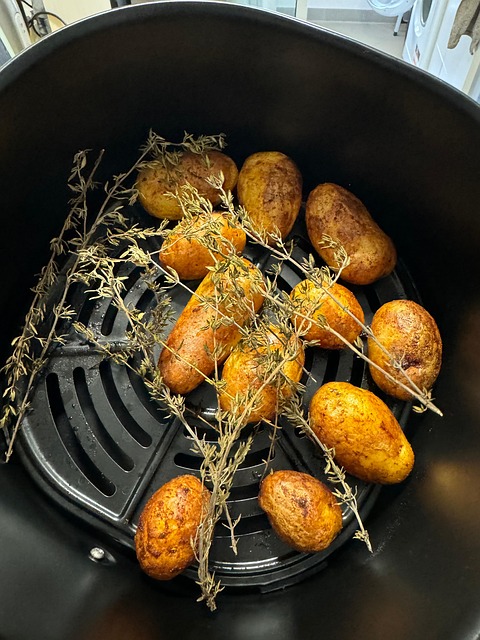Explore helpful tips on making refreshing appetizer dishes
Creating memorable appetizers sets the tone for any gathering, whether it's an intimate dinner party or a large celebration. The key to successful starter dishes lies in balancing flavors, textures, and visual appeal while keeping preparation manageable. From selecting the right ingredients to mastering presentation techniques, understanding the fundamentals of appetizer creation can transform your hosting experience and leave guests eagerly anticipating the main course.

Explore helpful tips on making refreshing appetizer dishes
The art of crafting exceptional appetizers goes beyond simply arranging ingredients on a plate. Successful starters require thoughtful planning, strategic ingredient selection, and an understanding of how flavors complement each other. Whether you’re hosting a casual gathering or an elegant dinner party, the right approach to appetizer preparation can elevate your entire menu and create lasting impressions on your guests.
Light and Tasty Appetizer Ideas for Every Palate
Creating appetizers that satisfy without overwhelming requires careful consideration of portion sizes and flavor intensity. Fresh vegetables paired with herb-infused dips provide a crisp, clean start to meals. Consider cucumber rounds topped with herbed cream cheese and smoked salmon, or colorful bell pepper strips served alongside homemade hummus variations. Fruit-based options like melon wrapped in prosciutto or fresh berries with whipped goat cheese offer sweet and savory contrasts that awaken the palate.
Cheese and charcuterie boards remain popular choices for their versatility and visual appeal. Select three to five varieties of cheese with different textures and intensities, accompanied by cured meats, nuts, and seasonal fruits. The key is creating balance through contrasting flavors and textures that encourage exploration and conversation among guests.
Simple Preparation Methods for Starters
Efficient preparation techniques can significantly reduce stress while maintaining quality results. Make-ahead components allow hosts to focus on final assembly rather than last-minute cooking. Prepare dips, spreads, and marinades up to two days in advance, storing them properly to maintain freshness and flavor development.
No-cook appetizers offer excellent solutions for busy schedules or warm weather entertaining. Caprese skewers, stuffed cherry tomatoes, and various bruschetta toppings can be assembled quickly without heating the kitchen. For hot appetizers, consider items that can be partially prepared in advance and finished in the oven, such as stuffed mushrooms or phyllo-wrapped ingredients.
Batch cooking techniques work particularly well for items like meatballs, spring rolls, or savory tarts that can be frozen after initial preparation and reheated when needed.
Creative Ingredient Combinations to Try
Experimenting with unexpected flavor pairings can transform ordinary ingredients into memorable creations. Mediterranean influences work well in appetizer applications, combining olives, sun-dried tomatoes, and fresh herbs with various proteins and cheeses. Asian-inspired combinations featuring ginger, soy sauce, and sesame oil create bold flavors in small bites.
Seasonal ingredients provide natural inspiration for creative combinations. Spring asparagus paired with lemon and parmesan, summer tomatoes with fresh basil and mozzarella, autumn apples with sharp cheddar and walnuts, or winter root vegetables with warming spices all celebrate the best of each season.
Texture contrasts add interest and sophistication to simple ingredients. Combine crispy elements like toasted nuts or crackers with creamy components such as soft cheeses or smooth spreads. Add fresh herbs or microgreens for color and additional flavor complexity.
Serving Suggestions for Any Occasion
Presentation plays a crucial role in appetizer success, influencing both visual appeal and practical consumption. Consider the setting and guest count when selecting serving vessels and arrangement styles. Individual portions work well for formal gatherings, while shared platters encourage mingling at casual events.
Timing considerations affect both food safety and optimal flavor presentation. Serve temperature-sensitive items immediately after preparation, while room-temperature options can be displayed for longer periods. Plan serving sequences to ensure guests receive appetizers at their intended temperatures and textures.
Accommodate dietary restrictions and preferences by clearly labeling items and providing varied options. Include vegetarian, gluten-free, and dairy-free choices to ensure all guests can participate in the appetizer experience.
Tips for Refreshing Your Appetizer Game
Staying current with appetizer trends while maintaining personal style requires balance between innovation and proven techniques. Incorporate global flavors gradually, introducing one or two new elements rather than completely unfamiliar combinations. This approach allows guests to experience new tastes while maintaining comfort with familiar elements.
Seasonal menu rotation keeps appetizer offerings fresh and takes advantage of peak ingredient quality and availability. Develop a repertoire of reliable recipes for each season, then experiment with variations and new additions as confidence builds.
Guest feedback provides valuable insights for future menu planning. Pay attention to which items disappear quickly and which remain largely untouched. This information helps refine future selections and portion planning.
Conclusion
Mastering appetizer creation involves understanding the balance between flavors, textures, and visual presentation while maintaining practical preparation methods. Success comes from thoughtful ingredient selection, efficient preparation techniques, and attention to serving details that enhance the overall dining experience. By incorporating these principles and remaining open to creative experimentation, any host can develop a repertoire of impressive appetizers that set the perfect tone for memorable gatherings.


